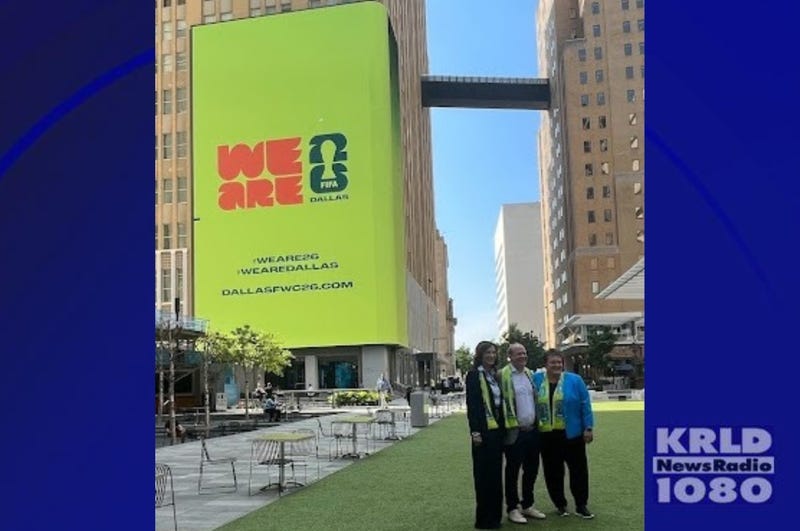Everything you need to know about the FIFA 2026 World Cup brand launch
FIFA has revealed the branding for the 2026 World Cup and as expected, the unveiling has quickly spread around the globe.
Not yet a subscriber? Join other sports marketing industry professionals to receive unique insights and in-depth analysis that you won't find anywhere else!
FIFA has revealed the branding for the 2026 World Cup and as expected, the unveiling has quickly spread around the globe.
The new logo features the World Cup trophy layered over a “2” and “6” stacked vertically, and it’s the first time the world’s most recognisable trophy has featured.
The trophy is intentionally featured at the forefront with the long-term in mind.
FIFA are aiming to start a new system that builds further brand equity in the trophy, making into an asset that becomes even more iconic to future generations.
As always, there are some critics.
Fans and onlookers have been critical of FIFA’s “minimalist”, “standardised”, “clean” and “bland” execution, in comparison to previous ones they’ve created.
Others argue that “…nothing screams America about this design.”
Check out the video featured in the tweet below that showcases the simplicity of design.
The new design further explained by FIFA officials…
In consultation with external agency support, the FIFA in-house brand team were the creatives behind their new design.
FIFA officials have explained that they’ve produced the new design to make the brand:
Inclusive and simple
Highly customisable
To help represent each of the host cities
To easily sit across multiple platforms, e.g. not just in media but also on platforms like merchandise such as jerseys, caps, shoes etc.
A customisable design for a more localised campaign
Although the base logo will remain the same across all executions, each of the 16 host cities across USA, Mexico and Canada will have their own unique versions, created using unique colour palettes and other unique and distinctive brand assets.
For example, The Kansas City logo is red & blue and “We are Kansas City” reference.
Some other examples…
The launch event - on & offline
The flashy event took place at Los Angeles’ iconic Griffith Observatory, which overlooks the Hollywood Sign.
FIFA president Gianni Infantino revealed the new branding in front of celebrities from around the world, who enjoyed several performances put on by recording artists.
The full event was also streamed lived across the globe - Click here.
Extending the launch into the host cities
Shortly following the main event, local organising committee’s followed up with their own localised brand launches.
Localised reveals took place at exclusive events, in public forums and in front of mega outdoor billboards.
Click below to view Boston’s host city brand reveal video.
Coca-Cola look set to quickly follow with their own reveal
Shortly after FIFA’s major announcement, it looks like Coke are set make an announcement of their own - integrating FIFA’s new logo onto their products.
Global announcements like these provide Coke with a perfect platform to generate their own earned media, ensuring that they’re leveraging their affiliation with FIFA on a global scale.
Coke is one of FIFA’s longest-standing sponsors
They’ve been advertising in-stadiums since 1950 and their formal sponsorship began in 1978.
Coca-Cola have historically spent huge dollars activating and leveraging this sponsorship and this doesn’t look like it’s going to change any time soon. Most recently, they took the World Cup trophy around the globe and ended their tour in North America to preview the 2026 World Cup.
Distraction? or adding to the momentum of the FIFA Women’s World Cup?
Even though the biggest men’s World Cup in history is not taking place until 2026, they’re already kicking-off large-scale promotions with the FIFA Women’s World Cup is not far away.
FIFA, government’s and brands have been busy building hype to create the biggest Women’s World Cup in history.
FIFA are anticipating:
1.5m total attendees across the tournament
2b global viewership
The Matildas opener against Ireland to set a world record attendance for a standalone women’s world cup - it has been rescheduled from Allianz Stadium to Accor stadium (capacity 83,500) to accommodate up 40,000 more fans
Although starting promotion for the men’s event in 2026 may come across as a move that could cannibalise the event marketing efforts of the women’s world cup, the announcement gives FIFA another reason for global relevance at a pivotal time.
Promoting the FIFA brand more holistically should contribute to the overarching growth and interest in the global game, which should indirectly assist with building further anticipation for the kick-off taking place in Australia, in July.
Like what you’ve read and not yet a subscriber? Join other sports marketing industry professionals to receive unique insights and in-depth analysis that you won't find anywhere else!















